Famous Astronomers & Telescopes
Table of Contents
The Telescope has a four hundred year history and in this time there have been a lot of astronomers and telescope makers who have built telescopes, made discoveries and advanced astronomy in remarkable ways. These links are to articles written on this website about many of these famous people. This is a list that is being added to over time. If you want a brief overview of the timeline of the telescope, see below.
Tycho Brahe
Tycho Brahe, a Danish astronomer who died 400 years ago, is still relatively unknown to most people today. Nonetheless, his planetary observations and other celestial discoveries helped pave the way scientific breakthroughs that helped to shape our understanding of the world as we know it — and his private life was equally intriguing.
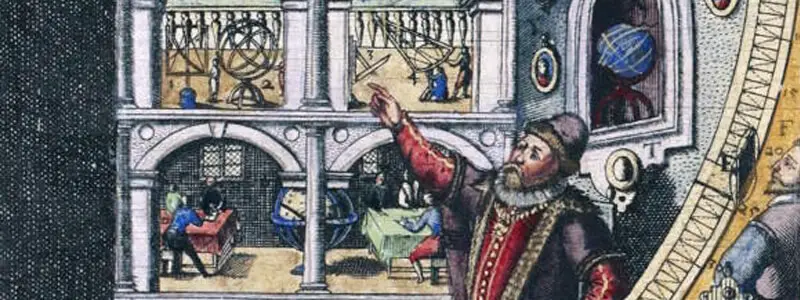
Considered to be the greatest astronomer without a telescope. He made careful and accurate measurements of the stars, built several observatories that were like palaces and discovered the first Super Nova. read more
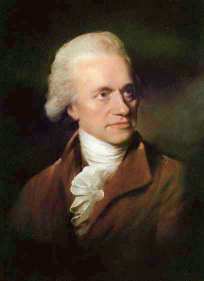 William Herschel
William Herschel
He was the Kings astronomer in the 18th century and both he and his sister caroline made remarkable discoveries with telescopes that he made. He made over 400 telescopes and he also made a telescope that was 49 inches in diameter and for 50 years it was the largest telescope in the world.
He was an avid amateur astronomer but this turned to a full time profession when he discovered the planet Uranus on March 13th, 1781. This brought him a lot of fame and is how he became the Kings Astronomer. read more
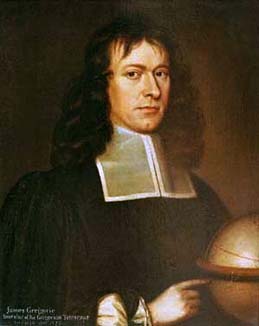 James Gregory
James Gregory
He was a 17th century mathematician and astronomer and he designed the first practical reflecting telescope. The design of his telescope is named after him as “The Gregorian” and it still sees limited use today.
James Gregory is credited as having designed the first practical Reflecting telescope. It is named after him: “The Gregorian Telescope” and it still sees some limited use in today’s world. read more
Sir Isaac Newton
He built the first practical telescope in the famous style called “The Newtonian” and this style of telescope is still used today because it is inexpensive, easy to make and easy to use.
The actual telescope that Newton built still survives today and is in the care of the Royal Society of London. They keep it on display in London and sometimes it travels the world as part of an exhibit. read more
 Galileo
Galileo
He didn’t invent the telescope but he did turn his telescope and his thoughts to the night sky. This changed the world!
Galileo challenged conventional views of the universe by observing by observing objects in the sky then applying the laws of mathematics and logic to what he saw. He turned the telescope into an important tool of understanding the universe we live in. read more
Huyghens
He was a contemporary of Galileo who greatly improved upon Galileos design for refractor telescopes. He built some massively long telescopes that were as much as 120 feet. His understanding of optics helped him make these telescopes and he used them to make new discoveries in the universe.
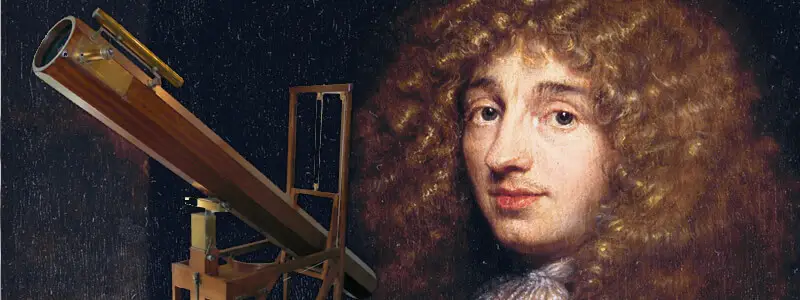
He had a deep understanding of astronomy, optics, mathematics and mechanical devices. And he built some of the largest telescopes of the 17 th century. read more
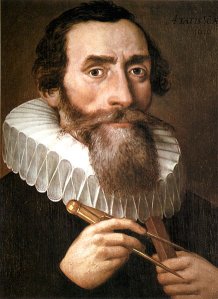 Johannes Kepler
Johannes Kepler
Astronomer, Mathematician and Optician. He created a new type of telescope and his three laws changed our understanding of how planets revolve around the sun.
He is also the inventor of the Keplerian Telescope which was a distinct improvement over the Galilean telescope. Keplers telescope used a convex lens at the eyepiece rather than a concave one. This gave the telescope a greater field of vision and better eye relief but it did necessitate a longer focal length.
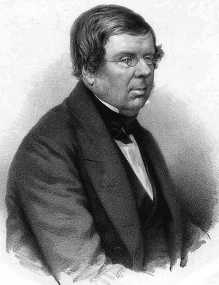 Lord Rosse
Lord Rosse
He made the largest telescope of the 19th century and it still stands at the castle today. It is called The Leviathan of Parsons town. His contribution to astronomy was more practical than mathematical but among these were of course the contribution to the general field of telescope making and of special note were drawings and observations of nebulae and galaxies. He was the first to resolve various night sky objects to the point where they could be seen as spiral galaxies or distinct nebulae.
Edwin Hubble
An astronomer and cosmologist who proved that the universe was a lot bigger than previously thought. The famous Hubble space telescope isn’t his! It’s just named after him. No modern astronomer made a more profound contribution to our understanding of the cosmos than did Edwin Hubble, who first conclusively demonstrated that the universe is expanding.
Origins of the Telescope
The origins of who invented the telescope may be lost to time but conventional wisdom, with supporting records, generally lends credence to the first telescope maker as being a Dutch spectacle maker named Hans Lippershey. In 1608 he applied for a patent for a telescope and the story goes that his son was tinkering around with lenses and held one near his eye and one at arms length – thus the telescope was born.
But some new detective work has brought to light an even earlier record of telescopes. A recently uncovered will shows a brass decorated telescope among the objects given by Don Pedro de Carolona to his widow in Barcelono in 1593. And this predates the Lippershey patent by 15 years. This isn’t proof that Don Pedro invented the telescope, it is just a record showing us that he had one.
This was investigated by a British historian Nick Pelling. He found a Spanish text from 1959 that refers to research by an optometrist called Jose Maria Simon de Guilleuma who investigated claims that a Spanish spectacle maker called Roget invented the first telescope. Simon examined wills of people in the area of Barcelona and the earliest mention of a telescope was the 1593 bequeathment of Don Pedro to his widow. Simon also found a record of a telescope belonging to a Catalan merchant Jaime Galvany. It was sold in auction in 1608.
So, the mystery of the origins of the telescope continues! Who knows, maybe we will continue to find earlier and earlier references to the remarkable instrument.
Earlier claims to the invention of the telescope:
- In Napes a man named Giobvanni Battista della Porta describes the telescope in his 1593 book entitled: De Refractione.
- A Florentine named Rafael Gualterotti stated that he built a spyglass in 1590
- A Spanish book by Milanes Girolamo Sirtori releated
Telescope Timeline
- 1593 – A Spanish man, in his will, bequeaths his telescope to his widow. Don Pedro de Carolona in Barcelona Spain. This isn’t telling us that he invented the telescope, just that he had one before the traditionally accepted 1608 date of its invention.
- 1608 – Hans Lippershey applies for a patent for a refractor telescope
- 1609 – Galileo Galilei makes a refractor telescope and turns it to the skies
- 1616 – Niccolo Zucchi constructs the first reflecting telescope
- 1630 – Christoph Scheiner constructs a keplerian telescope based on Keplers design
- 1650’s – Christiaan Huygens improves on the design of the refractor telescope and build some large scopes
- 1663 – James Gregory designs the first reflector telescope but does not build one for several years because of difficulties in construction technique. This style of telescope is called “The Gregorian Reflector”.
- 1668 – Sir Isaac Newton builds the first workable reflector telescope
- 1672 – Laurent Cassegrain improves on the Gregorian design by creating the Cassegrain telescope
- 1721 – John Hadley produces the first workable Gregorian telescope
- 1733 – Chester Hall designs and builds the first achromatic lenses which dramatically improved the performance of refractor telescopes
- 1789 – William Herschel builds the largest telescope of the 18th Century. It was a giant reflector with a mirror that was 49 inches wide.
- 1895 – The largest refractor in history is completed at the Yerkes Observatory at the University of Chicago in Williams Bay, Wisconsin. The 40 inch lens was built by Alvan Clark.
- 1908 – The 60 Inch Mount Wilson reflector is completed
- 1910’s – George Willis Ritchey and Henri Chretien co-invent the Ritchey-Chretien telescope which is a design used in many modern observatory telescopes.
- 1917 – The 100 inch Hooker telescope is completed
- 1924 – Edwin Hubble used the 100″ Hooker telescope to find Cepheid variable stars in the andromeda galaxy. This allowed him to scientifically orive that it was outside the milky way galaxy. This was a significant event in that the size of the universe was proven to be much larger than only our milky way galaxy. The milky way became just one galaxy among many others.
- 1944 -Dmitri Dmitrievich Maksutov invents the Maksutov telescope
- 1948 – The 200 Inch Hale reflector at Mount Palomar observatory is completed
- 1950’s – The Dobsonian style telescope is credited as having been invented by John Dobson
- 1965 – the 238 Inch Large Alatazimuth Telescope in Russia is completed
- 1990 – The Hubble Telescope was launched into space. This telescope has brought us images and information that is unprecedented. It is a Ritchey Chretien design and has a primary mirror that is 2.4 meters wide (94.5 inches)
- 1995 – The Hubble telescope takes the deep field image which is arguable the most profound astronomical image ever taken, along with the Hubble Ultra deep field (2003-2004) and Hubble Deep Field Sount (1998)
- 2005 – The Large Binocular Telescope (LBT) achieves first light. This telescope has the largest single piece of glass mirrors. Each mirror is 8.4 meters (330 inches) in width and when used together they create the equivalent of a mirror that is 11.8 meters (464 inches) across which is currently the largest light collecting size on Earth. It is located in Mount Graham International Observatory in Arizona
- 2005 – The South African Large Telescope (SALT) achieves first light. It has a segmented primary mirror that is 10.4 meters in diameter (409 inches)
- 2013 – The James Webb Space Telescope is scheduled for launch. It will have a 6.5 meter diameter mirror.
- 2017 – The Giant Magellan Telescope (GMT) is scheduled to achieve first light. It will have an array of seven solid glass mirrors that will combine to be the equivalent of a 24.5 meter (80 foot) telescope. Which will make it much larger than anything yet built. (Appproximately 960 inches!)
Resources
Resources if you want to investigate this further:
- Article on HistoryToday.com
- Article on Cipher Mysteries website
- Book on Amazon.com: The Invention of the Telescope
- Book on Amazon.com: Galileo’s Glassworks: The Telescope and the Mirror
- Book on Amazon.com: Renaissance Vision from Spectacles to Telescopes (Memoirs of the American Philosophical Society) (Memoirs of the American Philosophical Society) This book deals with the history of eyeglasses from their invention in Italy ca. 1286 to the appearance of the telescope three centuries later. By the end of the 16th century eyeglasses were as common in western & central Europe as desktop computers are in western developed countries today. Eyeglasses served an important technological function at both the intellectual & practical level, not only easing the textual studies of scholars but also easing the work of craftsmen/small businessmen. An important synthesis of this book is that Florence, rather than Venice, seems to have dominated the commercial market for eyeglasses during the 15th century, when two crucial developments occurred: the ability to grind convex lenses for various levels of presbyopia & the ability to grind concave lenses for the correction of myopia. As a result, eyeglasses could be made almost to prescription by the early 17th century. Illus.
